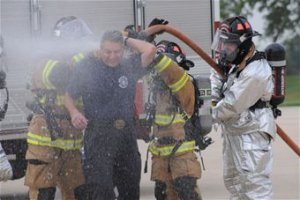Emergency decontamination procedures are the various processes of removing accumulated contaminants which are very critical to the health and safety of health care providers by preventing secondary contamination between health care workers and other patients within the health care facility.
Emergency decontamination procedures should have a definitive plan in educating the employees both medical and non-medical personnel in a health care facility about basic decontamination procedures, the identification of the proper equipment needed and the basic practical methods to be used and proper established methods for disposal of contaminated materials.
Basic principles of emergency decontamination procedures
Although there are so many overlapping principles of emergency decontamination procedures and theories surrounding the proper and effective way of decontaminating victims of toxic disasters, there are basically two general steps. The first step is generally the quick removal of the victim’s clothing and personal items such as jewelry and other accessories (earrings, piercings etc.) and rinsing the individual with running water maintaining proper distance between health worker and patient. Moreover, it is imperative that there should be proper drainage systems so chemicals flushed with water are properly contained. Depending on the type of exposure, this step alone can already significantly remove large amounts of contamination and decrease the risk of secondary contamination. The second step consist with a thorough wash with soap and water to further rinse the contaminants from the body.
Preparing the Victim for emergency decontamination procedures
A more thorough discussion on how to properly prep a victim for emergency decontamination procedures is to first undress the victim from the top of the body down to the bottom. Secondly, personal property of the individual should be removed and preferably placed in an airtight container. Whole body decontamination can ideally be completed in two thorough wash cycles. Using lukewarm water and neutral pH soap as an emulsifier is preferred to better remove contaminants on the body’s surface. Using pressurized running water is allowed unless the victim suffers second or third degree burns from the contamination. Avoid rigorous scrubbing as this will damage the protective properties of the skin and mucous membranes. Normally, the outermost dermal layer traps most of the radioactive contaminants therefore thorough and complete cycles of decontamination are important to help remove toxic chemicals from the skin’s surface.
Radiation Body Survey before and after emergency decontamination procedures
The use of Geiger-Mueller detector can systematically detect and survey the 

